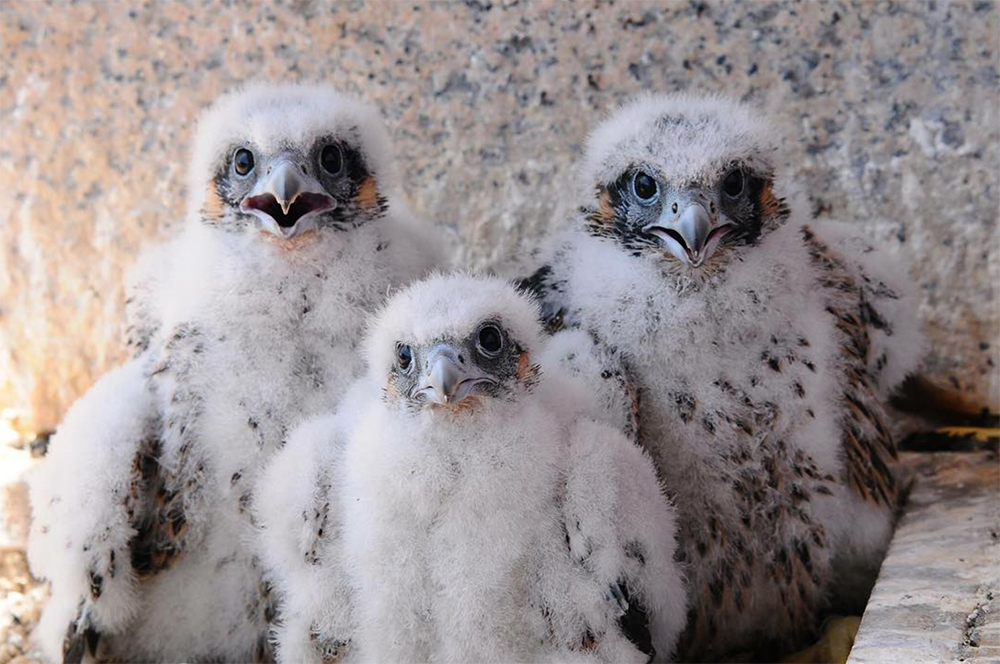
Bay Watch
Spring has brought with it a flurry of good news about the bay. First, using sonar technology, scientists from the Smithsonian Environmental Research Center found that the Choptank River has more river herring in it than previously suspected. Then, the Maryland Department of Natural Resources found that reproductively viable female crabs are at their most plentiful since 1990 and that the amount of underwater grass in Maryland’s portion of the bay reached a record high of 59,277 acres in 2016. Furthermore, in late April, the Chesapeake Bay Foundation seeded 3 million baby oysters in the Patapsco River, hoping to return oyster shoals to the urban waterway. All of these rehabilitative milestones indicate that federally overseen pollution control programs are stabilizing the bay after decades of environmental decline. And though it briefly looked like funding for those measures would be threatened by the Trump administration’s proposed EPA budget cuts, Congress decided to maintain program funding for the coming fiscal year.
Following such a streak, the University of Maryland Center for Environmental Science issued a report this week awarding the bay one of its highest-ever health grades. Though on its face an unimpressive C, the grade represents drastic improvement since the University of Maryland Center for Environmental Science began evaluating the bay in 1986 and a 1-point improvement over last year’s score. As with the Chesapeake Bay Foundation scorecard—another important third-party bay evaluation—the University of Maryland Center for Environmental Science grades the bay in several categories and then aggregates those scores into an overall mark.
“I really believe we’re at a tipping point,” Nicholas DiPasquale, director of the Environmental Protection Agency’s Chesapeake Bay Program office in Annapolis, told The Sun. “Once you reach a point where you’ve overcome the inertia of the system, these indicators start building on each other.”
A third regional water quality scorecard, this one measuring the health of Baltimore’s Inner Harbor and its tributaries, will be released on Monday by Waterfront Partnership of Baltimore.
On Your Bike
National Bike to Work Day is next Friday, May 19, and the Central Maryland Metropolitan Council has collected a handy list of nearly 40 official events on its website. The events range from bike safety checks to commuting convoys led by experienced cyclers and designed to introduce newbies to the ins and outs of bike commuting. Though Baltimore City is hosting the greatest number of events, Anne Arundel, Baltimore, Howard, Carroll, and Harford counties are represented, too. Bike to Work Day grew out of National Bike Month, which began in 1956. It promotes the benefits of cycling, which include physical fitness and reduced vehicle emissions and air pollution.
In The Air
Speaking of reduced vehicle emissions, The Sun has a good rundown of where the Baltimore region stands in terms of air quality. In short, the Maryland Clean Air report found that, overall, air quality was better in Baltimore in 2016 than it had been in previous years, but that ozone levels ticked up. Ozone is ground level smog created when particles from vehicle and power plant emissions interact with sunlight. It can be harmful to humans—particularly the very young, very old, and very sick—and is the cause of the Code Orange and Code Red air quality alerts that are sometimes issued.
“We’re making clean air progress with strong partnerships and steady investments, but more is needed regionally and nationally to sustain our pace and protect our health,” Maryland Department of the Environment Secretary Ben Grumbles said in a statement. “Marylanders’ hearts, lungs and waterways will benefit from smart actions at home and in upwind states to keep improving our air quality.”
Birdcam Season Soars
And now, as they say, for something completely different. Naturalists from all over the world delight each year in the Chesapeake Bay’s springtime birdcams—and this year is no different. The Chesapeake Conservancy hosts live streams of three of the most popular:
The peregrine falcon cam atop 100 Light Street in Baltimore City, which is capturing the growth of four furry fluffballs.
The great blue heron rookery on the Eastern Shore
And the osprey cam on Kent Island
There is also another osprey cam, this one following a nest with three eggs at Severna Park High School
Follow along as the birds raise their families and the chicks eventually fly the nest. Happy spring and happy birding!
